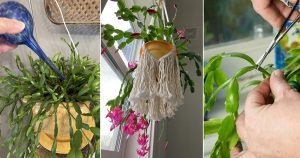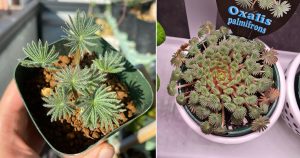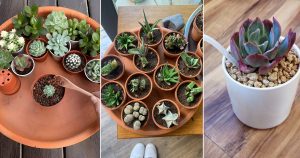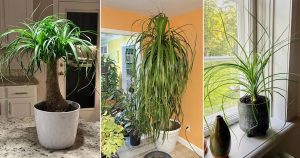How about learning to grow and care for the Orchid cactus? Because in the end, you will have every reason to cherish the beautiful blossoms!
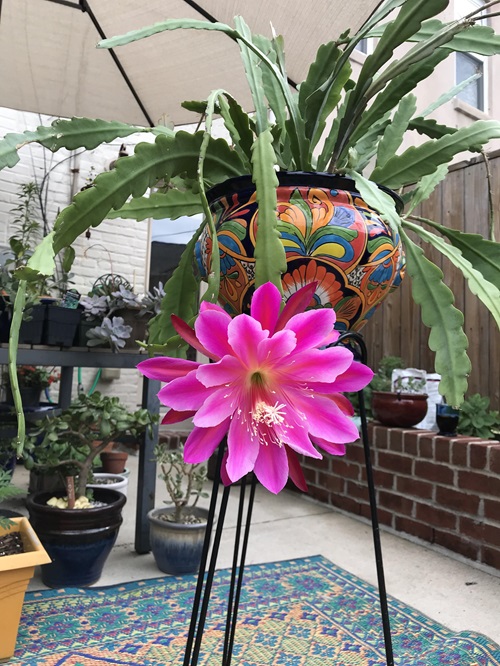
Epiphyllum species are commonly referred to as “Orchid Cacti” because of their bright and colorful blossoms that resemble tropical orchids. Unlike desert cacti, these grow on trees and not on the ground. Fascinating, right? Let’s check out how to grow Orchid cactus in your home.
Orchid Cactus-Key Facts
| Common Name | Orchid cacti, Climbing cacti, Leaf cacti, Hanging Orchid cacti |
| Botanical Name | Epiphyllum species |
| Native Place | Central and South America |
| USDA Zones | 10-11 |
| Size | Grows up to a height of 10 feet |
| Flowering | April to June |
| Light | Upto is 10 feet tall. |
| Temperature | Above 32 F |
| Soil | Well-drained |
| Watering | Every 2-3 days |
| Fertilizer | During active season |
| Pests & Diseases | Mealybugs, Aphids, Gnats and Spider mites |
| Propagation | Stem cuttings |
Orchid Cactus Information
The Orchid cactus is a group of Epiphyllum species. It is a genus that holds more than 15 tropical succulents and many are hybrids of interesting shapes, sizes, and colorful bloomers. Usually, they feature long, flat, non-spiny, and trailing stems. Along with this, the center of attraction lies in their bright, large, fragrant, and night-blooming flowers in the spring or summer.
This is why it gets the name “Orchid cactus”. Also since their growing conditions are very similar to orchids they’ve earned the title for themselves. In the wild, these mostly epiphytic plants grow on branches or trunks of trees. They absorb the moisture and nutrients they need from the humid environment around them.
Propagating Orchid Cactus
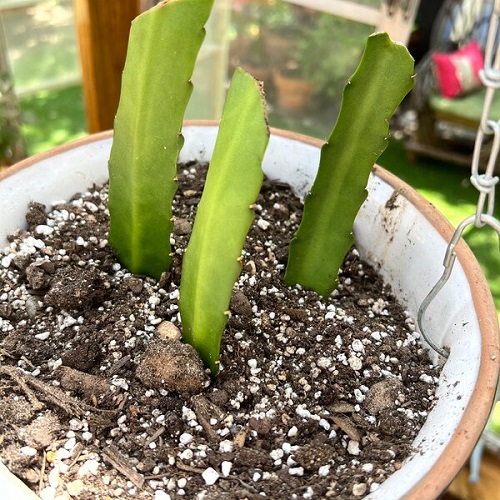
Stem Cuttings
The fastest and most effective way of propagating these plants is by stem cuttings. Just select healthy stem sections that are at least 6-8 inches in length because if it isn’t long enough then it will take longer to flower. Allow the cut ends to dry and form a callus. This helps to prevent rotting. Then prepare a succulent potting mixture and insert the cuttings about 2 inches deep into the soil.
Just keep the soil lightly moist and when it starts to appear dry, make it moist again. Regular deep watering should only be done after the roots have formed. It takes around 6 weeks for the cutting to root. Place it in a warm, partially shaded location for better results.
Pot Size
When propagating Orchid cacti, small pots are ideal for single-stem cuttings as they allow the plant to focus on root development. If you want a fuller look, you can plant 3-4 cuttings together in a wide-mouth pot.
Once the plant matures and starts trailing, you can move it to a larger hanging basket or a bigger pot. Keep in mind that it can take 1-2 years of patience for the plant to grow big enough to flower.
Orchid Cactus Requirements
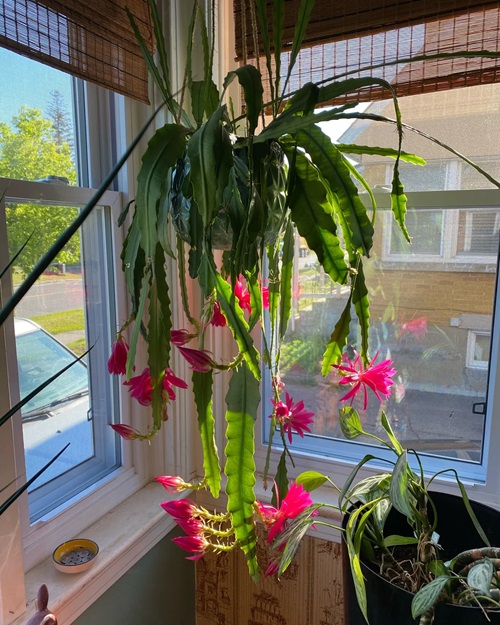
1. Light
In its native habitat, it grows under the dappled sunlight in the forest clinging to the barks which means that it won’t thrive well in direct sunlight. So, grow it in bright light conditions but avoid exposure to direct sun, especially during the hottest part of the day.
If you’re growing them near a windowsill or in a well-lit indoor space, that’s usually enough. However, if the natural light isn’t sufficient, you can supplement it with a grow light or other alternatives.
2. Water
Do not be in a dilemma by seeing the word cactus in its name because Orchid cacti love water! They do not like to dry out completely so, make a balanced routine of watering every 3-4 days in the spring-summer season and less frequently in the winter to prevent overwatering.
However, if you live in a humid region then you may leave them without water for 5-6 days and check the moisture before watering again. Because overwatering may harm these plants as well.
3. Soil
As the name has Orchid in it, this cactus also tends to like a medium that has dried tree bark, coconut chunks, or any orchid potting mixtures. You can directly purchase an orchid potting mix, or you can make your own.
Use just 1 part of an organic mix, like perlite, pebbles, or fir bark, and 3 parts of potting soil. Since they can live off leaf mold and prefer to always be a bit moister than orchids, add a little moss to your potting mix.
4. Temperature
Orchid cacti enjoy the temperature that resembles a cooler indoor environment which is why they are great as houseplants. In fact, they also tolerate fluctuating temperatures so you can freely place them on windowsills. The approximate range of temperature they prefer is from 65°C to 75°F (18°C to 24°C).
However, they struggle if the night temperature drops below 50°F (10°C). So keep a check and try to maintain a good temperature range inside your home.
Orchid Cactus Care
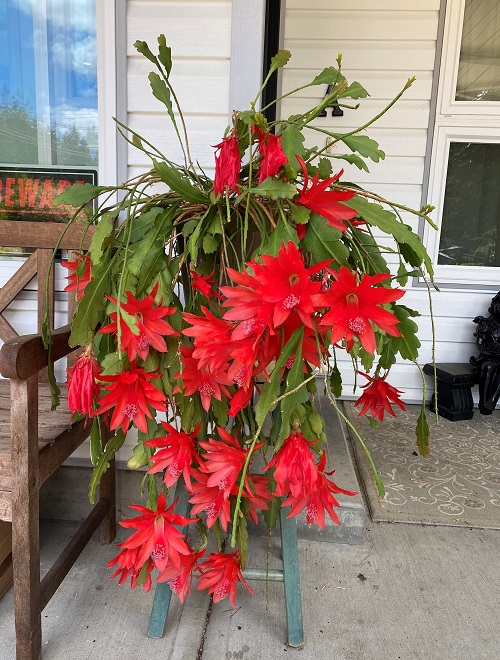
1. Fertilizer
The success of growing an Orchid Cactus depends on its proper fertilization. So, during the growing season, a balanced liquid fertilizer diluted to half-strength can be applied every two weeks. However, if your cactus produces many blooms during this period, you can increase the frequency of fertilizing but only apply the fertilizer at half strength.
While fertilizing, it is important to water your plant thoroughly before and after fertilizing to flush out any excess salt build-up in the soil.
2. Pruning
Once all the flowers have fallen off, it’s a good time to trim off any dead leaves, yellowing leaves, or leaves that just look dead. If there are open spaces in your potting soil, snip longer leaves back and plant them into the soil.
However, before you start cutting, make sure the shears are sterilized with alcohol or a bleach solution. This is the safest way to keep your cactus from developing infections and microorganism infestations.
3. Pest and Diseases
Pests like snails, mealybugs, aphids, gnats, and spider mites can give Orchid cacti a hard time. Snails are the biggest troublemakers—they love the moisture near the base and often climb up to snack on flower buds, sometimes inviting ants to the party too!
You can use hanging baskets to keep snails away. Regularly check for sticky residue, webbing, or tiny bugs. At the first sign of trouble, treat with neem oil spray or insecticidal soap. Keeping your plant and its space clean is like a shield against pests—prevention is always better than cure!
That’s it and you are all ready to welcome some beautiful Orchid cacti into your home! Let us know which one is your favorite and when are you bringing one home.

